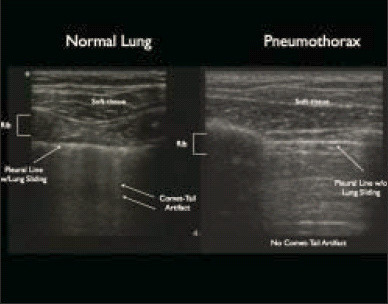Focused abdominal sonography for trauma (FAST) has been around in one form or another for about 40 years. Sonographic examination of the abdomen was used in Europe in the 1970s, while the US was using diagnostic peritoneal lavage (DPL). FAST finally moved to the US in the 1990s and continues to this day. It has also been incorporated in the Advanced Trauma Life Support Course sponsored by the American College of Surgeons.
About 10 years ago, emergency physicians began using sonography to evaluate the thorax as well. The technique was primarily used to detect air (and possibly fluid) in the pleural space. Sensitivity and specificity have increased nicely over the years as the technology and our experience has improved.
Most trauma centers incorporate FAST into their trauma activations. Although it was initially vetted using blunt trauma patients, it can be and is used for evaluation in penetrating trauma. But relatively few centers expanded it to eFAST to evaluate the chest. Should they?

Bottom line: Definitely! Extended FAST adds about a minute to the overall exam and may provide information before the chest x-ray is obtained. It may also show pathology that the typical trauma chest x-ray cannot due to patient body habitus and supine positioning. I recommend that the eFAST be the standard of care in trauma activations if you have an ultrasound machine. Important! But be sure to have a way to record and perform quality reviews of the information obtained.
Related posts:

